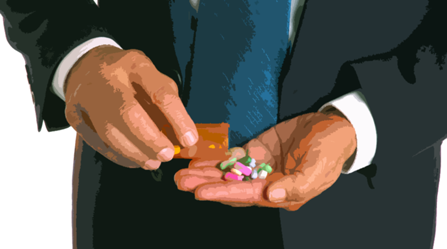How Much Are YOU Paying for the Drug and Alcohol Abuse of Americans?
It’s very likely the majority of Americans think drug abuse and addiction are problems that don’t directly affect them. Unless it’s present in their household, they’re free of any effects, right? Actually, no. The financial burden of drug abuse, addiction and excessive use of alcohol reach into every household in the country. There’s no escaping them.
How much does the abuse of these drugs cost?
- According to the Surgeon General, drug use racks up a cost of $442 billion each year.
- According to the latest estimate from the Centers for Disease Control and Prevention (CDC), excessive alcohol consumption costs $249 billion a year.
This means that each American shoulders a burden of $2,165 per year. And since millions are underage, incarcerated or incapacitated, employed adults will bear an even heavier burden.
Where Do These Costs Come From?
The CDC lists all the ways these costs are felt.

- Workplace productivity losses which could include impaired employees unable to perform their duties, absenteeism, workplace accidents or violence, employee turnover and other costs such as theft or embezzlement
- Healthcare expenses for treating problems caused by drunkenness, chronic alcohol consumption, accidents, assaults, overdoses, accidental poisoning or other injuries
- Law enforcement, criminal justice, border patrol and customs costs
- Social welfare costs such as benefits for a person who was injured due to drug or alcohol abuse and is unable to work, protection of domestic violence victims and the foster care system for children
- Losses resulting from traffic accidents
The individual who has no drug use or addiction in his immediate vicinity will still see all these costs lighten his wallet. His federal and state taxes will be higher. His property taxes and local sales taxes will be higher to cover some of these costs. Businesses he deals with may have to raise their prices due to these losses, or maybe they will even go out of business. His health insurance costs will be higher to make up for the higher need for benefits by an addicted person. If he’s an employer, he may see all his fees and taxes inching up.
A Family with Five Children
Some friends of mine have five beautiful children. I don’t think they realize that they are burdened with a bill of more than $15,000 a year as their share of the cost of America’s drug and alcohol abuse. That’s enough to pay a year’s tuition for two of their children at most state universities.
While this burden exists for each American, there are actions you can take to fight back. Here are some actions to consider.
- Start educating your own children on the dangers of drug abuse, starting very early (around third grade) with age-appropriate messages.
- Repeat these messages often
- Know more than your children do about the drugs they are likely to encounter so you can speak with authority
- Support these strategies recommended by the CDC to reduce the costs of alcohol consumption:

- Alcohol pricing strategies that shift more of the cost burden to those consuming the products
- Regulation of the density of liquor stores (a greater number of stores in a community usually equals more problems, crimes, injuries and abuse)
- Hold alcohol sellers responsible for injuries or damage caused by their intoxicated or underage customers
Check out the ideas in the following article for ridding your neighborhood of troublesome neighbors you think might be involved in selling drugs:
Spotting Subtle (or Not So Subtle) Signs of Drug Abuse in Your Neighborhood
When communities fight back, especially when they work together in a coordinated effort, it can help to reduce these costs.
And when someone you care about has lost control of drug or alcohol consumption, help him (or her) find rehab at the very first moment possible. You could not only be saving his life, others around him may realize the extent of their problems and start seeking help.
To find out how we can help, call Narconon International at 1-800-775-8750 today.


 ®
®